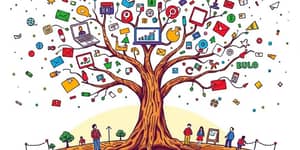
In 2025, the stakes for acquiring new B2B customers have never been higher. With market valuations soaring and competition intensifying, businesses must adopt innovative, data-driven tactics to connect with decision-makers and close high-value deals. This article explores cutting-edge strategies and practical insights to transform your customer acquisition efforts and drive sustained growth.
The global B2B eCommerce market valued at $32.11 trillion is expanding at a remarkable 14.5% CAGR, projected to exceed $36.16 trillion by 2026. Critical segments such as advanced manufacturing, healthcare, energy, and professional services are leading this surge. Modern buyers demand seamless omni-channel experiences, personalized insights, and rapid responses across digital touchpoints.
Unlike B2C acquisition, B2B processes involve longer sales cycles, multiple stakeholders, and an intricate alignment between marketing and sales teams. Decision-makers consult numerous sources—industry peers, expert content, community forums—before engaging directly with vendors. Adapting to this evolving behavior is essential for sustained success.
Top-performing channels combine outreach, education, and relationship-building at scale. To maximize reach and efficiency, leading B2B organizations rely on:
The acquisition landscape in 2025 is defined by rapid technological adoption and shifting buyer expectations. Several trends are reshaping how companies engage and convert prospects:
As legacy cold outreach loses impact, peer recommendations and authoritative voices become the new currency of trust. Companies that harness these trends early gain a decisive advantage.
To illustrate the strengths and applications of each approach, here is a concise overview:
The complexity of B2B acquisition presents several hurdles. Traditional funnels are fracturing as buyers enter and exit at unpredictable points. Generic cold outreach faces growing skepticism, and the average deal now involves 6 to 10 decision-makers evaluating every proposal.
To overcome these challenges, focus on multi-channel nurturing, relevance in every touchpoint, and trust-building content that speaks directly to each stakeholder’s concerns. Abandon one-size-fits-all approaches in favor of segmented, personalized experiences.
Successful teams translate strategy into precise execution. Consider these practical steps:
Data-driven measurement is at the heart of sustainable growth. Monitor key metrics such as conversion rates vary by acquisition channel, cost per acquisition, customer lifetime value, and return on marketing spend. Email marketing and SEO typically deliver the strongest long-term ROI, while paid ads offer rapid customer wins at higher costs.
Establish clear benchmarks for each channel, conduct regular performance reviews, and iterate on creative and targeting strategies. Transparent reporting aligns marketing and sales on shared goals, driving continuous improvement.
In the rapidly evolving B2B landscape of 2025, strategic alignment between marketing and sales and a relentless focus on personalized, trust-building experiences are non-negotiable. By embracing AI-powered automation, leveraging first-party data, and engaging peers through communities and influencers, organizations can break through fragmented funnels and capture high-value customers.
Implement the tactics outlined here with rigor, measure relentlessly, and remain agile in the face of emerging trends. These proven strategies will empower your team to navigate complexity, outperform competitors, and achieve transformative growth.
References













